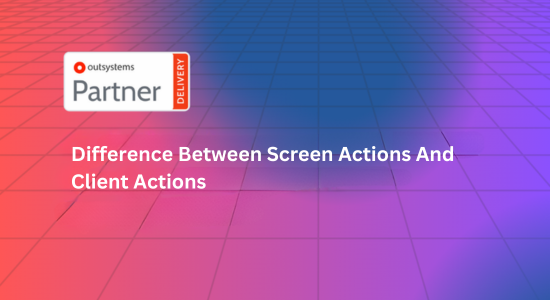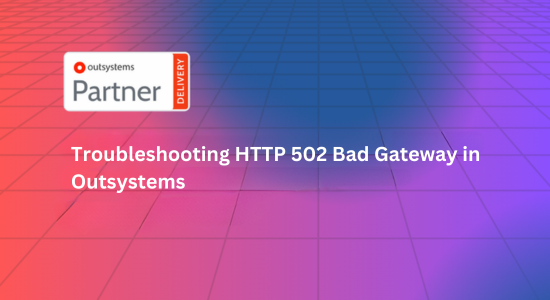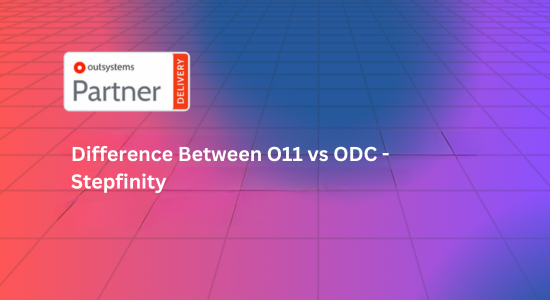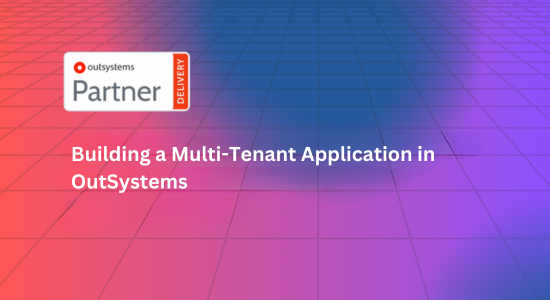In today’s competitive business environment, maximizing efficiency is key to staying ahead. OutSystems, a leading low-code platform, offers powerful tools for accelerating development and enhancing business processes. Stepfinity, an expert OutSystems partner, provides valuable insights on how to leverage this platform to boost your business efficiency. This blog explores expert tips for optimizing OutSystems to achieve operational success.
1. Define Clear Objectives and Requirements
Establish Clear Goals
Before starting any OutSystems project, it’s crucial to define clear objectives and requirements. This includes:
- Business Goals: Identify the specific business goals you want to achieve, such as improving customer service, automating workflows, or increasing operational efficiency.
- Functional Requirements: Determine the functionalities and features needed in the application to meet your objectives.
- Performance Metrics: Set performance metrics to evaluate the success of the project.
Conduct Thorough Requirement Analysis
Conduct a thorough requirement analysis to ensure that all stakeholder needs are captured. This involves:
- Stakeholder Interviews: Engage with key stakeholders to understand their needs and expectations.
- Process Mapping: Map existing processes to identify areas for improvement and automation.
- User Stories: Develop user stories to define the end-user experience and desired outcomes.
2. Leverage OutSystems’ Low-Code Capabilities
Utilize Pre-Built Components
OutSystems offers a range of pre-built components and templates that can accelerate development. Utilize these resources to:
- Speed Up Development: Use pre-built components to quickly assemble applications without starting from scratch.
- Ensure Consistency: Leverage standardized templates to ensure consistency and best practices across applications.
Implement Visual Development Tools
OutSystems’ visual development tools enable rapid application design and deployment. Take advantage of:
- Drag-and-Drop Interface: Use the drag-and-drop interface to design user interfaces and workflows quickly and intuitively.
- Real-Time Preview: Preview changes in real-time to ensure that the application meets design and functionality requirements.
Integrate with Existing Systems
Seamless integration with existing systems is crucial for maximizing efficiency. Use OutSystems to:
- Connect to Legacy Systems: Integrate with legacy systems to ensure that new applications work harmoniously with existing IT landscapes.
- Utilize APIs: Leverage APIs to connect with third-party applications and services, enhancing functionality and data exchange.
3. Adopt Agile Development Practices
Embrace Iterative Development
Agile development practices are essential for optimizing OutSystems projects. This involves:
- Rapid Prototyping: Develop and test prototypes quickly to gather feedback and make improvements early in the development process.
- Incremental Delivery: Deliver applications in incremental stages, allowing for continuous feedback and adjustments.
Foster Collaboration
Effective collaboration between IT and business teams is key to success. Ensure that:
- Cross-Functional Teams: Form cross-functional teams that include developers, business analysts, and end-users to ensure diverse perspectives and expertise.
- Regular Meetings: Conduct regular meetings to review progress, address issues, and adjust project plans as needed.
4. Focus on User Experience
Design for Usability
A positive user experience is crucial for application adoption and effectiveness. Focus on:
- Intuitive Interfaces: Design user interfaces that are easy to navigate and use, minimizing the learning curve for end-users.
- Responsive Design: Ensure that applications are responsive and provide a consistent experience across different devices and screen sizes.
Conduct User Testing
User testing is essential to validate the application’s usability and functionality. Involve end-users in:
- Usability Testing: Conduct usability testing to gather feedback on the application’s design and functionality.
- Feedback Sessions: Organize feedback sessions to identify areas for improvement and make necessary adjustments.
5. Optimize for Performance and Scalability
Monitor Application Performance
Monitoring application performance is crucial for maintaining efficiency. Use OutSystems’ built-in tools to:
- Track Performance Metrics: Monitor key performance metrics such as response times, transaction volumes, and system resource usage.
- Identify Bottlenecks: Identify and address performance bottlenecks to ensure optimal application performance.
Plan for Scalability
Ensure that your OutSystems applications are designed with scalability in mind. This involves:
- Scalable Architecture: Design applications with a scalable architecture to handle increasing user loads and data volumes.
- Flexible Infrastructure: Use flexible infrastructure options to accommodate growth and changing business needs.
6. Implement Robust Security Measures
Ensure Data Security
Data security is paramount in any application. Implement robust security measures to:
- Protect Sensitive Data: Use encryption and access controls to protect sensitive data and ensure compliance with data protection regulations.
- Regular Security Audits: Conduct regular security audits to identify and address potential vulnerabilities.
Manage User Access
Effective user access management is essential for security and efficiency. Ensure that:
- Role-Based Access Control: Implement role-based access control to ensure that users have appropriate access levels based on their roles and responsibilities.
- Audit Trails: Maintain audit trails to track user activities and changes within the application.
7. Leverage OutSystems Community and Resources
Engage with the OutSystems Community
The OutSystems community is a valuable resource for knowledge and support. Engage with:
- Forums and User Groups: Participate in forums and user groups to share experiences, seek advice, and learn from others.
- Events and Webinars: Attend OutSystems events and webinars to stay updated on the latest features, best practices, and industry trends.
Utilize Training and Documentation
Take advantage of OutSystems’ training and documentation resources to:
- Enhance Skills: Enroll in training programs to enhance your team’s skills and knowledge of the OutSystems platform.
- Access Documentation: Use official documentation to understand platform features, tools, and best practices.
Conclusion
Leveraging OutSystems effectively can significantly boost your business efficiency. By defining clear objectives, utilizing low-code capabilities, adopting agile practices, focusing on user experience, optimizing for performance and scalability, implementing robust security measures, and engaging with the OutSystems community, you can maximize the benefits of the platform. Stepfinity’s expert tips provide a roadmap for optimizing your OutSystems projects and achieving operational success. Embrace these strategies to enhance efficiency, drive innovation, and stay competitive in today’s digital landscape.








